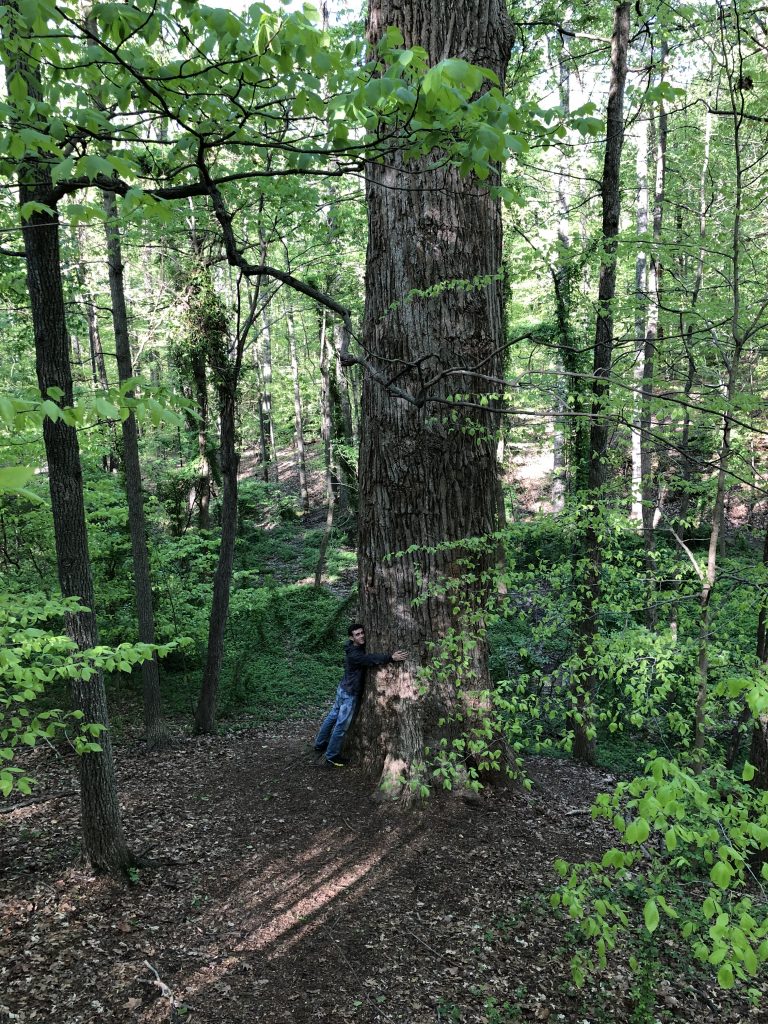Deep in the Guilford woods stands a dominant Tulip Poplar (Liriodendron tulipifera L.). With its trunk that stands as wide as four people across and its staggering height the tree is hard to miss. It is this prominence that is responsible for the role that the tree played in a very crucial time. This particular tree holds an important spot in the history of these woods as the tree that stood as a marker for escaped slaves heading up north to a life of freedom. This tree served as a sign of hope, reassurance, and safety for those who were risking everything to live a life that they shouldn’t have had to fight for in the first place.
For these individuals seeking a new life the land served a vastly different purpose than those who were indigenous to it, or those who have studied at the college. It is important to make these distinctions between the different purposes the land served to different people, and the different roles that it has played over time. Without these distinctions you can’t have a full picture of the history of the area. As the human activity in the land changed, the factors affecting the environment also changed drastically. Moving from a space where people lived as part of the land, to a space where people live on the land but are relatively removed from the landscape.
This tree is the largest tree in the entirety of the Guilford woods, and its species is one of the largest trees native trees in the eastern United States. On average they reach a height of around 100 ft., but have been known to surpass this up to 190 ft., and they are typically 4-6 ft. in diameter. Poplar trees thrive most in soil that is able to hold moisture, so the clay soil of the woods explains why our poplar tree was able to grow so successfully. These trees tend to grow quicker than a lot of the trees in the surrounding area, and are known to live for hundreds of years. The incredibly vast size of this tree indicates that it is one of the older trees in the woods, and it is known that it has been around since at least the mid 1800s due to the history of the tree.

Now the tree doesn’t serve the same purpose as it used to, but tours of people are still taken through the area to see the beauty of the tree and learn about its role in history. There was even a platform built in the middle of the path for people to sit and admire the beauty of this tree. However, this platform sticks out like a sore thumb amongst the sea of trees and greenery. It’s clear that it has been constructed very recently, and it is interesting that it completely cuts off the path that leads to the tree. Finding this path blocked seems almost counterintuitive when knowing what the tree symbolizes.